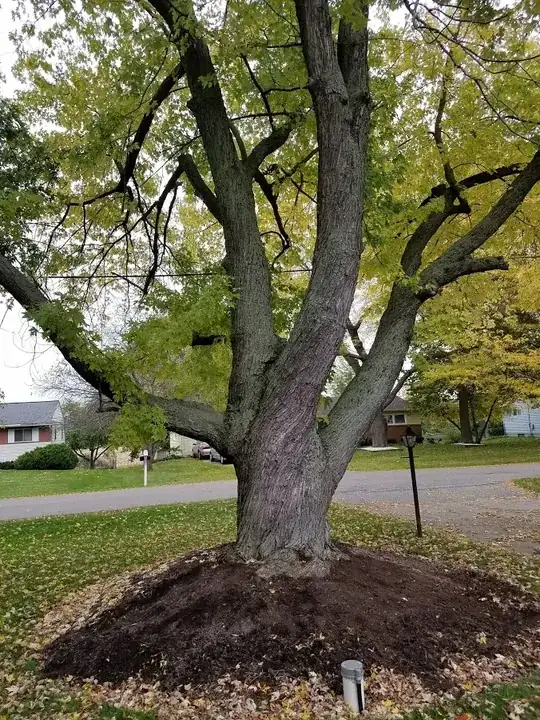Yes that mound will KILL this tree, slowly but surely. Unless the roots begin just below that line where the soil stops, you have to remove that mound! Any soil, mulch, rock, plastic that touches the bark of the trunk that is supposed to be out of the soil will allow moisture to create a great environment for bacteria to thrive. The vascular system, the live part of that trunk is a thin, thin line just below the bark. Once that is compromised, that tree will die within a year, maybe less. Roots send the water up to the leaves as well as certain chemicals necessary for photosynthesis and then the food that the plant makes for itself is sent down to the roots for storage and more power as roots are unable to photosynthesize to make their ENERGY, they rely on the energy sent down to them from the canopy/the photosynthetic factories.
Pull that soil back until you are able to see the root ball. Hopefully your tree hasn't been girdled where the vascular system is destroyed all around the circumference. Otherwise, partial flow will work while the tree tries to heal the compromised vascular system. I am so very glad you thought about this. Most people have no clue how important this is, including landscape maintenance companies!! Achilles' heel of trees.
If the mound is above the root ball and is on the trunk then all you can do is pull that soil away from the trunk.
I am seeing there might be a different history and this was an original tree left from construction/drainage. Exposing roots and by mounding the soil trying to save the roots...whoa. If this is indeed the problem then a simple low, easily a DIY project, wall around that perimeter will solve the MOUND. You just need to find the top of the root ball. Yes, it is a maple.
